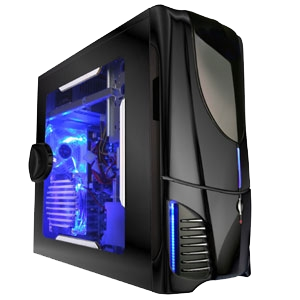How to Know If Your Processor is Overhead
 CPU is the chip inside your computer that is responsible for most of the day-to-day use. In short, it is the part that does most of the work to make Windows run the application. CPU temperature is ideal at the time was on the point of being cold (which is usually equal to room temperature).
CPU is the chip inside your computer that is responsible for most of the day-to-day use. In short, it is the part that does most of the work to make Windows run the application. CPU temperature is ideal at the time was on the point of being cold (which is usually equal to room temperature).When the CPU temperature rises, it may cause problems, ranging from system crashes which is not desirable even to physical damage to the processor itself. Most modern CPUs have a protection feature that automatically disable them if they are too hot, so that possible damage can be avoided.
you can check your CPU specs on the site CPUs World that will give you detailed information about the details of the CPU maximum temperature for all processors. In general, you should consider a maximum temperature of 60 degrees Celsius for long time use, but see to it that you stay within the temperature 45-50 degrees to be safe.
Leaving your PC stuck in hot temperatures for long periods of time is not a good idea because it may cause premature failure of the CPU or other components, so you have to take certain steps such as using a free utility such as SpeedFan.
Download this free utility from Almico and this utility will check not only the temperature of your CPU, but any other sensor on the computer You, like the ambient case temperature, hard drive temperature and so forth. Find the temperature of Core 0, Core 1, Core 2 of each CPU core will have its own thermistor, but they all will have the same readings as the display window menu of Windows in general.
you can leave the app running in the background and you can play games or run other applications while the application is working. Then, after a few minutes, you can switch back to SpeedFan and check the temperature of your CPU.
If your CPU temperature is too hot, you should look for ways to improve cooling. If you have a laptop, make sure each fan is not clogged with dust (use carefully vacuum to suck the dirt out) and if you have time, you can embroider a laptop cooler. This device can help you lower the temperature of the laptop heat.
How to use SpeedFan utility to check the CPU temperature
You can check the CPU by using SpeedFan utility. As well as allowing you to monitor the temperature of your processor, this utility can also access your motherboard sensors and other sensors so that you can check the temperature of your CPU environment and probably more, as the temperature of the hard disk, depending on your motherboard.
Given its name, it is not surprising that SpeedFan also allows you to monitor the fan speed of your computer. This utility works with all versions of Windows, starting from 90s era version of Windows 8 and end up completely free. Here's how to install and use:
1. Once you download this utility from the link above that has Paseban, then you are ready to install this utility.
2. Run the executable file that you just get and accept all the default options. There is no malware and no intrusive search engines included in this device, so if you see the option to install a search engine Delta, you accidentally click on an ad instead of downloading SpeedFan.
3. Run SpeedFan by finding your Start menu (or the Start Screen if you are running Windows 8) and click accept when User Account Control appears in Windows Vista, 7 or 8. SpeedFan will then detect your hardware before displaying the temperature of your environment. The first tab (Readings) will display all the detected temperature on the right.
4. You can monitor the temperature from time to time using the Charts tab. Check the box next to each item that you want to monitor. Click on a tab to see the SMART information on your hard disk, including charts for 'fitness' and 'performance'. It also allows you to run tests in depth on each disc, and check the maximum temperature recorded.
Subscribe to:
Post Comments
(
Atom
)






No comments :
Post a Comment